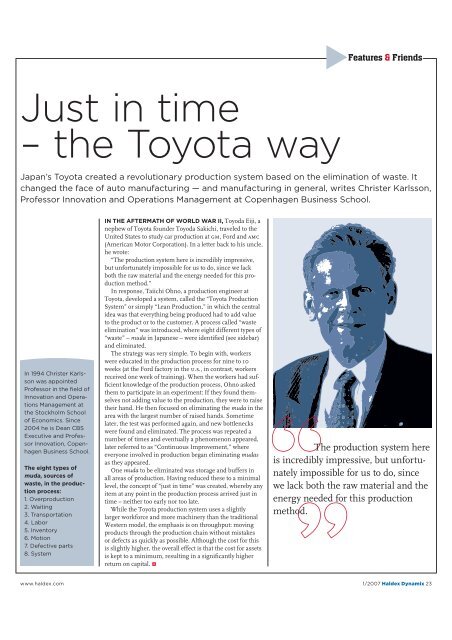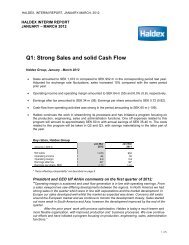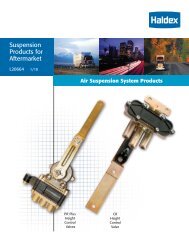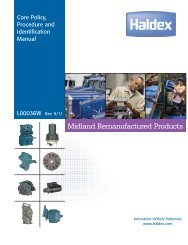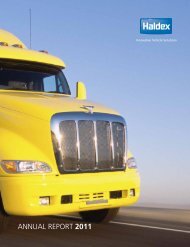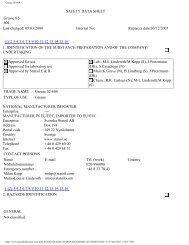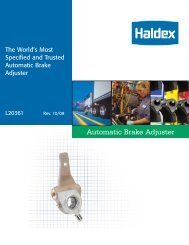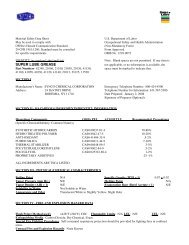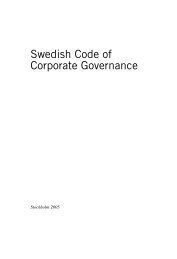Intelligence for All Wheel Drive - Haldex
Intelligence for All Wheel Drive - Haldex
Intelligence for All Wheel Drive - Haldex
You also want an ePaper? Increase the reach of your titles
YUMPU automatically turns print PDFs into web optimized ePapers that Google loves.
Just in time<br />
– the Toyota way<br />
�Features<br />
& Friends<br />
Japan’s Toyota created a revolutionary production system based on the elimination of waste. It<br />
changed the face of auto manufacturing — and manufacturing in general, writes Christer Karlsson,<br />
Professor Innovation and Operations Management at Copenhagen Business School.<br />
IN THE AFTERMATH OF WORLD WAR II, Toyoda Eiji, a<br />
nephew of Toyota founder Toyoda Sakichi, traveled to the<br />
United States to study car production at gm, Ford and amc<br />
(American Motor Corporation). In a letter back to his uncle,<br />
he wrote:<br />
“The production system here is incredibly impressive,<br />
but un<strong>for</strong>tunately impossible <strong>for</strong> us to do, since we lack<br />
both the raw material and the energy needed <strong>for</strong> this production<br />
method.”<br />
In response, Taiichi Ohno, a production engineer at<br />
Toyota, developed a system, called the “Toyota Production<br />
System” or simply “Lean Production,” in which the central<br />
idea was that everything being produced had to add value<br />
to the product or to the customer. A process called “waste<br />
elimination” was introduced, where eight different types of<br />
“waste” – muda in Japanese – were identifi ed (see sidebar)<br />
and eliminated.<br />
The strategy was very simple. To begin with, workers<br />
were educated in the production process <strong>for</strong> nine to 10<br />
weeks (at the Ford factory in the u.s., in contrast, workers<br />
In 1994 Christer Karls-<br />
received one week of training). When the workers had sufson<br />
was appointed<br />
fi cient knowledge of the production process, Ohno asked<br />
Professor in the field of<br />
them to participate in an experiment: If they found them-<br />
Innovation and Operaselves<br />
not adding value to the production, they were to raise<br />
‘‘<br />
tions Management at<br />
their hand. He then focused on eliminating the muda in the<br />
the Stockholm School<br />
area with the largest number of raised hands. Sometime<br />
of Economics. Since<br />
later, the test was per<strong>for</strong>med again, and new bottlenecks<br />
2004 he is Dean CBS<br />
were found and eliminated. The process was repeated a<br />
Executive and Profes-<br />
number of times and eventually a phenomenon appeared,<br />
sor Innovation, Copen-<br />
later referred to as “Continuous Improvement,” where<br />
The production system here<br />
hagen Business School.<br />
everyone involved in production began eliminating mudas<br />
as they appeared.<br />
is incredibly impressive, but un<strong>for</strong>tu-<br />
The eight types of<br />
One muda to be eliminated was storage and buffers in<br />
muda, sources of<br />
nately impossible <strong>for</strong> us to do, since<br />
all areas of production. Having reduced these to a minimal<br />
waste, in the produc- level, the concept of “just in time” was created, whereby any we lack<br />
’’<br />
both the raw material and the<br />
tion process:<br />
item at any point in the production process arrived just in<br />
1. Overproduction time – neither too early nor too late.<br />
energy needed <strong>for</strong> this production<br />
2. Waiting<br />
While the Toyota production system uses a slightly<br />
3. Transportation<br />
method.<br />
larger work<strong>for</strong>ce and more machinery than the traditional<br />
4. Labor<br />
Western model, the emphasis is on throughput: moving<br />
5. Inventory<br />
products through the production chain without mistakes<br />
6. Motion<br />
or defects as quickly as possible. Although the cost <strong>for</strong> this<br />
7. Defective parts is slightly higher, the overall effect is that the cost <strong>for</strong> assets<br />
8. System<br />
is kept to a minimum, resulting in a signifi cantly higher<br />
return on capital. �<br />
www.haldex.com 1/2007 <strong>Haldex</strong> Dynamix 23


